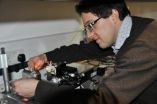Since its introduction in the 1930s, ECT has evolved into a more refined, but more expensive and extensively regulated clinical procedure. Each treatment involves the assembly of a multidisciplinary clinical team and the use of a highly specialized device to deliver brief pulses of low dose electric currents to the brain. ECT is performed while the patient is under general anesthesia and, depending upon each individual's response, is usually administered 2-3 times a week for 6-12 sessions.
A new study in Biological Psychiatry suggests that reductions in ECT treatment have an economic basis. From 1993 – 2009, there was a progressive decline in the number of hospitals offering ECT treatment, resulting in an approximately 43% drop in the number of psychiatric inpatients receiving ECT.
Using diagnostic and discharge codes from survey data compiled annually from US hospitals, researchers calculated the annual number of inpatient stays involving ECT and the annual number of hospitals performing the procedure.
Lead author Dr. Brady Case, from Bradley Hospital and Brown University, said, "Our findings document a clear decline in the capacity of US general hospitals – which provide the majority of inpatient mental health care in this country – to deliver an important treatment for some of their most seriously ill patients. Most Americans admitted to general hospitals for severe recurrent major depression are now being treated in facilities which do not conduct ECT."
This is the consequence of an approximately 15 year trend in which psychiatric units appear to be discontinuing use of the procedure. The percentage of hospitals with psychiatric units which conduct ECT dropped from about 55% in 1993 to 35% in 2009, which has led to large reductions in the number of inpatients receiving ECT.
Analyses of treatment for inpatients with severe, recurrent depression indicate the changes have equally affected inpatients with indications like psychotic depression and with relative medical contraindications, suggesting declines have been clinically indiscriminate. By contrast, non-clinical patient factors like residence in a poor neighborhood and lack of private insurance have remained important predictors of whether patients' treating hospitals conduct ECT, raising the concern of systemic barriers to ECT for the disadvantaged.
Where hospitals have continued to conduct the procedure, use has remained stable, indicating divergence in the care of patients treated in the large academic facilities most likely to conduct ECT and those treated elsewhere.
"Psychiatry has taken a step backward. The suffering and disability associated with antidepressant-resistant depression constitute a profound burden on the patient, their family, and society. ECT remains the gold standard treatment for treatment-resistant depression," commented Dr. John Krystal, Editor of Biological Psychiatry. "We must insure that patients with the greatest need for definitive treatment have access to this type of care. ECT may be one of the oldest treatments for depression, but its role in treatment has been given new life in light of a generation of research that has outlined molecular signatures of ECT's antidepressant efficacy."
###
The article is "Declining Use of Electroconvulsive Therapy in United States General Hospitals" by Brady G. Case, David N. Bertollo, Eugene M. Laska, Lawrence H. Price, Carole E. Siegel, Mark Olfson, and Steven C. Marcus (doi: 10.1016/j.biopsych.2012.09.005). The article appears in Biological Psychiatry, Volume 73, Issue 2 (January 15, 2013), published by Elsevier.
Notes for editors
Full text of the article is available to credentialed journalists upon request; contact Rhiannon Bugno. Journalists wishing to interview the authors may contact Brady Case at 401-432-1601 or brady_case@brown.edu.
The authors' affiliations, and disclosures of financial and conflicts of interests are available in the article.
John H. Krystal, M.D., is Chairman of the Department of Psychiatry at the Yale University School of Medicine and a research psychiatrist at the VA Connecticut Healthcare System. His disclosures of financial and conflicts of interests are available here.
About Biological Psychiatry
Biological Psychiatry is the official journal of the Society of Biological Psychiatry, whose purpose is to promote excellence in scientific research and education in fields that investigate the nature, causes, mechanisms and treatments of disorders of thought, emotion, or behavior. In accord with this mission, this peer-reviewed, rapid-publication, international journal publishes both basic and clinical contributions from all disciplines and research areas relevant to the pathophysiology and treatment of major psychiatric disorders.
The journal publishes novel results of original research which represent an important new lead or significant impact on the field, particularly those addressing genetic and environmental risk factors, neural circuitry and neurochemistry, and important new therapeutic approaches. Reviews and commentaries that focus on topics of current research and interest are also encouraged.
Biological Psychiatry is one of the most selective and highly cited journals in the field of psychiatric neuroscience. It is ranked 5th out of 129 Psychiatry titles and 16th out of 243 Neurosciences titles in the Journal Citations Reports® published by Thomson Reuters. The 2011 Impact Factor score for Biological Psychiatry is 8.283.
About Elsevier
Elsevier is a world-leading provider of scientific, technical and medical information products and services. The company works in partnership with the global science and health communities to publish more than 2,000 journals, including The Lancet and Cell, and close to 20,000 book titles, including major reference works from Mosby and Saunders. Elsevier's online solutions include ScienceDirect, Scopus, Reaxys, ClinicalKey and Mosby's Nursing Suite, which enhance the productivity of science and health professionals, and the SciVal suite and MEDai's Pinpoint Review, which help research and health care institutions deliver better outcomes more cost-effectively.
A global business headquartered in Amsterdam, Elsevier employs 7,000 people worldwide. The company is part of Reed Elsevier Group PLC, a world-leading provider of professional information solutions in the Science, Medical, Legal and Risk and Business sectors, which is jointly owned by Reed Elsevier PLC and Reed Elsevier NV. The ticker symbols are REN (Euronext Amsterdam), REL (London Stock Exchange), RUK and ENL (New York Stock Exchange).
Media contact
Rhiannon Bugno
Editorial Office END

